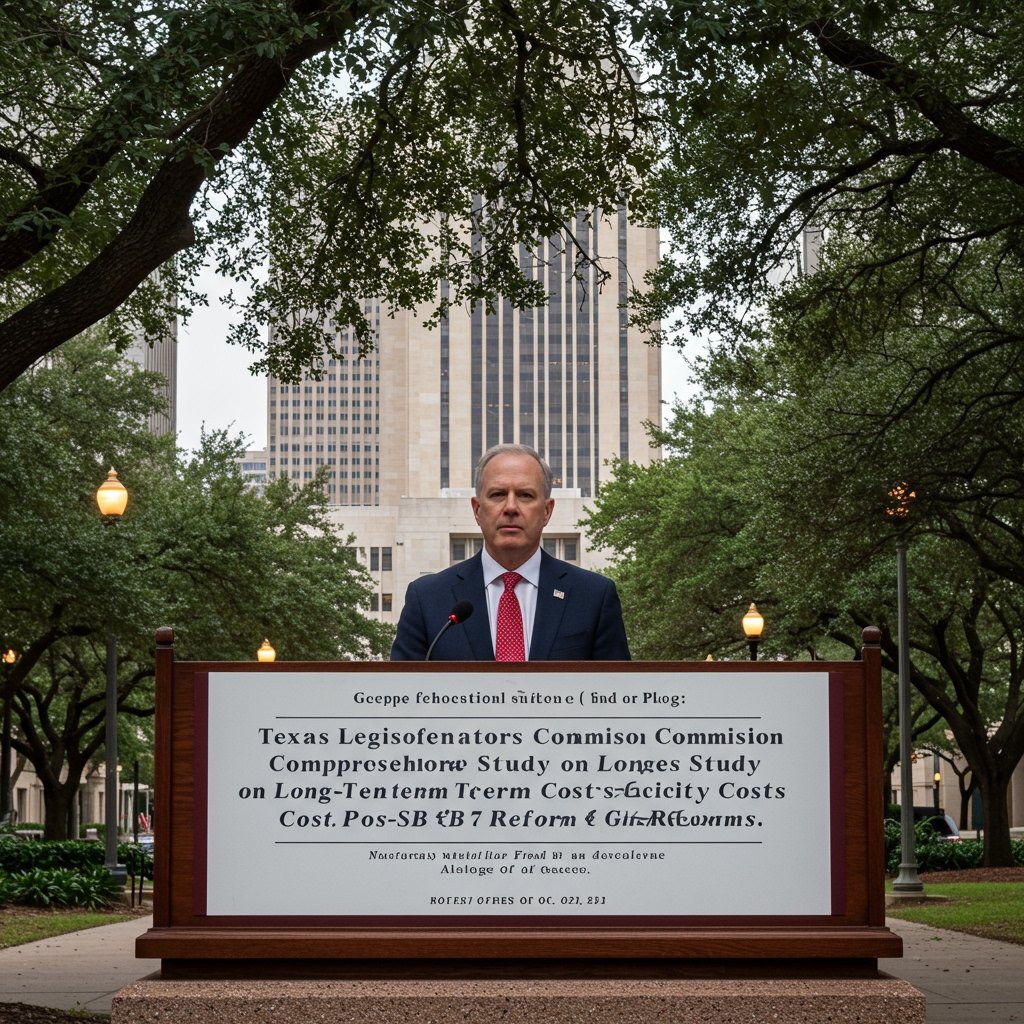Introduction
A joint legislative body overseeing Texas’s energy landscape has initiated a significant undertaking to thoroughly analyze the long-term financial repercussions of recent state-mandated grid improvements and market structure adjustments. On Thursday, March 27, 2025, the Texas House and Senate Energy Oversight Committee officially announced it has commissioned an in-depth study aimed at quantifying the potential impacts on the electricity bills of Texans over the coming decade. The decision underscores the ongoing legislative focus on ensuring grid reliability while grappling with concerns regarding the affordability of energy for consumers and businesses across the state.
Background: SB 7 and Market Reforms
The genesis of this study lies directly in the legislative and regulatory responses enacted following the severe grid performance failures experienced during Winter Storm Uri in February 2021. The most prominent legislative action was Senate Bill 7 (SB 7), passed during the 87th legislative session. SB 7 implemented a range of measures designed to enhance the reliability and resilience of the Texas electricity grid, primarily managed by the Electric Reliability Council of Texas (ERCOT). These measures included mandating weatherization standards for power generators and transmission facilities, creating a new reliability credit mechanism, and directing the Public Utility Commission of Texas (PUC) to pursue market design changes aimed at incentivizing dispatchable power generation and ensuring resource adequacy during extreme conditions.
Subsequent to SB 7, the Texas PUC has indeed been actively developing and implementing significant market design reforms within ERCOT. These changes, debated extensively among stakeholders, are intended to provide financial signals that encourage investment in reliable power sources capable of operating consistently, particularly during peak demand or challenging weather events. While the stated objective of these reforms is to prevent future catastrophic outages and ensure grid stability, there has been persistent discussion and concern among policymakers, consumer advocates, and industry participants regarding the potential long-term effects of these changes on the cost of electricity delivered to end-users.
The Study’s Scope and Objectives
Recognizing the complexity and potential economic magnitude of these reforms, the Texas House and Senate Energy Oversight Committee determined that a comprehensive, independent analysis was necessary to inform future policy decisions. The committee announced that the University of Texas Energy Institute has been awarded the contract to conduct this critical study.
“Understanding the full economic picture over the long haul is paramount as we continue to refine our grid policies,” stated a representative of the committee. “We have invested heavily in reliability, and now we must rigorously assess how these investments and subsequent market changes translate to costs for Texas families and industries.” The study is specifically tasked with analyzing the anticipated impacts of SB 7 and the associated PUC market design evolution on electricity rates across three key consumer segments: residential, commercial, and industrial users.
The analysis will project these potential effects over the next decade, providing legislators and the public with a forward-looking view of how current policies might shape future electricity costs. This long-term perspective is considered crucial, as the full costs and benefits of grid investments and market design shifts often materialize over several years.
The Chosen Institution: University of Texas Energy Institute
The selection of the University of Texas Energy Institute to undertake this study highlights the committee’s intent to obtain an analysis based on academic rigor and deep expertise in energy systems and economics. The Institute is known for its interdisciplinary research on energy topics, including grid reliability, market dynamics, policy analysis, and economic impacts. Their selection is expected to lend significant credibility and technical depth to the study’s findings.
The Institute’s researchers will likely employ sophisticated modeling techniques to simulate various market scenarios under the new regulatory and market frameworks. This will involve analyzing factors such as infrastructure investment costs, changes in generation mix, market clearing prices under different conditions, the impact of new reliability mechanisms, and how these wholesale costs are ultimately passed through to retail electricity providers and, subsequently, to end consumers through their monthly bills. The analysis will need to account for the diverse rate structures and contract types prevalent across the deregulated Texas market, particularly for residential and commercial customers, as well as the unique cost considerations for large industrial users.
Legislative Concerns and Balancing Priorities
The commissioning of this study signals that Texas legislators remain keenly focused on the delicate balance between ensuring grid reliability – a clear priority after Winter Storm Uri – and maintaining electricity affordability. While there is broad consensus on the need for a resilient grid capable of withstanding extreme weather, there are acknowledged concerns within the legislature and among their constituents about the potential for these necessary investments and market reforms to drive up electricity prices significantly.
Legislators have voiced their intent for the study to provide data-driven insights that can inform potential future adjustments to grid policy or market design, if necessary, to mitigate undue cost burdens on consumers and businesses while preserving reliability gains. The economic competitiveness of Texas is heavily reliant on predictable and reasonable energy costs, particularly for its robust industrial sector. Therefore, understanding and potentially mitigating adverse long-term cost impacts is a key objective underlying this legislative directive.
Timeline and Next Steps
The study is structured to provide timely information to the Texas House and Senate Energy Oversight Committee. Preliminary findings from the University of Texas Energy Institute are expected to be presented to the committee by the end of the fourth quarter of 2025 (Q4 2025). This initial report will likely outline key trends observed in modeling, potential ranges of cost impacts, and highlight areas requiring further in-depth analysis.
A final, comprehensive report from the Institute is anticipated in the first quarter of 2026 (Q1 2026). This final document will contain the complete analysis, detailed findings, methodologies, and conclusions regarding the long-term cost impacts of SB 7 and the subsequent PUC market design changes. The committee intends to use this report as a foundational document to guide discussions, evaluate the effectiveness and cost-efficiency of current policies, and inform potential future legislative or regulatory actions pertaining to the ERCOT market and grid operations.
Conclusion and Outlook
The commissioning of this detailed study by the Texas House and Senate Energy Oversight Committee represents a proactive step by state lawmakers to gain a clear, data-backed understanding of the long-term economic implications of recent grid reliability reforms. By tasking the University of Texas Energy Institute with this analysis, legislators aim to obtain an objective assessment of how SB 7 and subsequent market changes will potentially affect electricity rates for Texas consumers and businesses over the next decade.
The findings, expected in late 2025 and early 2026, will be crucial for informing future policy decisions, ensuring that Texas can maintain a reliable electricity grid while striving to keep energy costs affordable for all Texans. The study highlights the ongoing legislative commitment to navigating the complex intersection of grid engineering, market economics, and consumer welfare in the state’s unique energy landscape.






